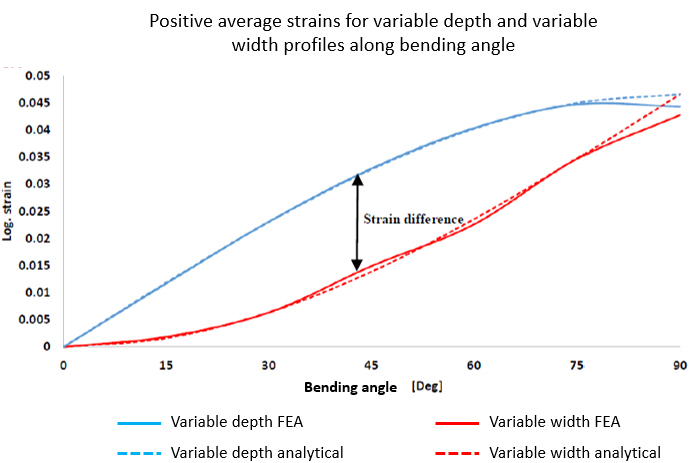Exploring developable surfaces and their defects in flexible roll forming
Researcher: Achuth Sreenivas
Aim:
The major aim of the project is to understand the deformation of combined variable width and depth developable and semi-developable profiles in flexible roll forming and identify their limits with regards to wrinkling.
Background:
Roll forming is limited to form only constant cross section profile. As a result, flexible roll forming is introduced, which has non-dedicated tools with additional degree of freedom which enables bending of sheet along non-straight profile path. However, curved profile bending leads to longitudinal stretching and compression in the flange which is required to achieve the desired shape. The compression in the flange can lead to wrinkling if the loads are above the critical value. One way to minimise the wrinkling tendency is to form a shape which has zero or minimum required strains to be achieved after forming. Such shapes are called developables and can be formed in flexible roll forming using the combination of width and depth.
Methodology:
The initial part of study is to quantify the required deformation in the flange for different profile combinations. An analytical model for calculating the strains is developed, which is verified through FEA and experiments. The second objective is to develop a criterion to predict the buckle initiation in the flange with the help of strain calculations. The criteria will be again verified for different shape combinations. The final part of study deals with application the buckling criteria in flexible roll forming of products with all possible shape combinations and set the forming limits for both developable, semi-developable or non-developable components.
Key Findings to date:
The nature of longitudinal deformation in the flange is identified for different profile combinations. A strain equation is developed to represent the required longitudinal strain in the flange for all the possible shape combination by identifying all the influencing parameters. It is identified that during the forming of a perfectly developable shape in flexible roll forming, the flange will experience tension or compression in the intermediate bending angle, but the final strain distribution will be zero. Therefore, the forming of such perfectly developable shapes are limited by the amount of compression which should be achieved for those intermediate angles.
Future Work:
- Develop the buckling criteria
- Verify the buckling criteria
- Apply the criteria and identify the forming limits for different shape combinations
Contact:
Achuth Sreenivas
Institute for Frontier Materials (IFM)
Deakin University, Geelong
Email: achut@deakin.edu.au

Leave a Reply
You must be logged in to post a comment.